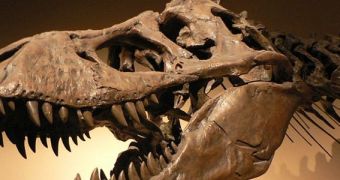A team of scientists in the United States was recently able to determine in a study that iron trapped in fossils plays a double role. First, it enables researchers to gain more data on the type of tissue that existed in the animal the fossil came from. Secondly, it makes the fossil more difficult to identify in the first place. However, scientists say that its effects are positive overall.
North Carolina State University (NCSU) paleontologist Mary Schweitzer says that iron contributes to maintaining ancient fossilized tissues in a state that enables researchers to study them millions of years later. The new study could open the way to even more tissue harvesting in the future.
In fossil samples, iron is primarily stored within hemoglobin, a molecule that is responsible for transporting oxygen within the bloodstream. The new research reveals how these trace amounts of iron both preserve and obscure signature of ancient proteins that existed in living tissues.
“Iron is necessary for survival, but it's also highly reactive and destructive in living tissues, which is why our bodies have proteins that transport iron molecules to where they are needed but protect us from unwanted reactions at the same time,” Schweitzer explains.
“When we die, that protective mechanism breaks down and the iron is turned loose on our tissues – and that destructive process can act in much the same way formaldehyde does to preserve the tissues and proteins,” she concludes, quoted by Astrobiology Magazine.

 14 DAY TRIAL //
14 DAY TRIAL //